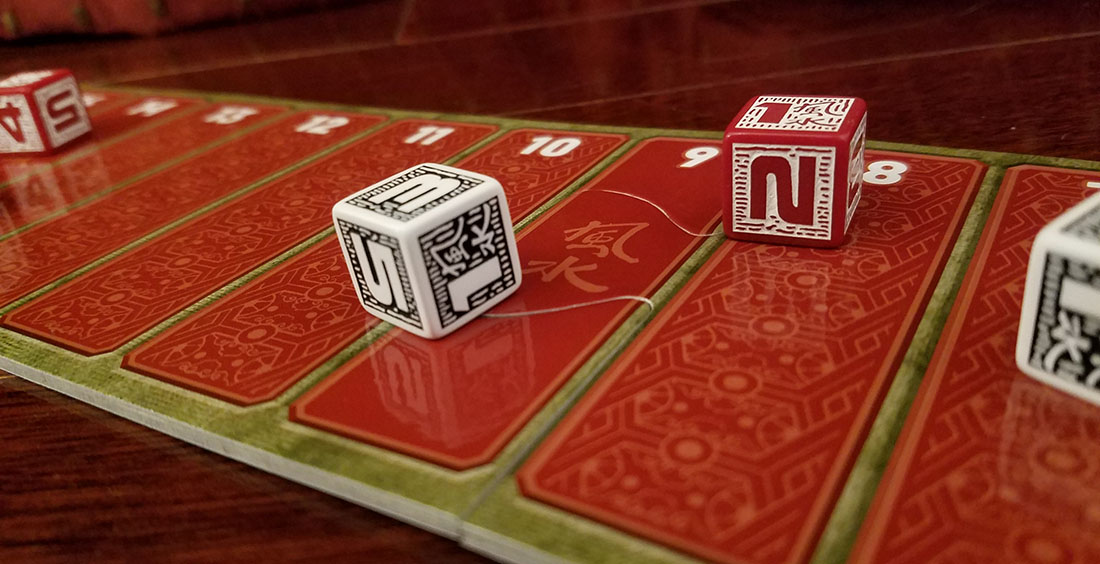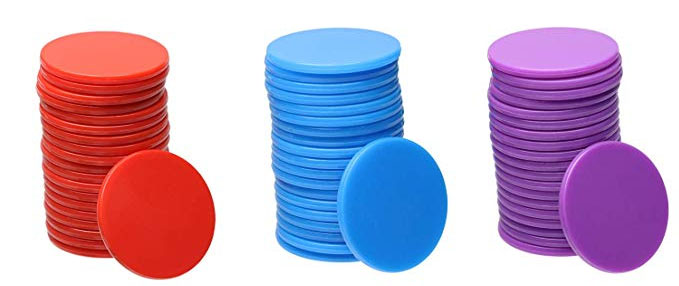One of my favorite sections of the Feng Shui 2 rulebook can be found on pg. 223-224. In a section entitled “Running Fights,” Robin D. Laws succinctly walks you through the exact procedures he follows at the table during a Feng Shui fight.
I don’t mean the rules. Those are located elsewhere. This is much more practical than that. For example:
Note the highest shot of any of your GMCs. Ask the players if any of them have a result higher than the highest shot you have marked on your shot counter. If so, that becomes your highest shot. If not, your GMC’s first shot is the first shot of the sequence.
Go to your laptop, and the browser tab in which you’ve opened your counter app. I use a Chrome browser app called, shockingly enough, Counter. Set the counter number to the first shot of the sequence, which you’ve just determined.
(…)
After a player acts, she moves her single token on her personal shot counter a number of spaces equal to the shot cost of the action — usually 3.
If multiple GMCs act on the same shot, they act in the order you’ve noted them on your scratch pad, from top to bottom.
This sort of “best practices” stuff is really useful. So much GMing advice in this hobby is wrapped up in big, abstract concepts: We need more of this nuts-and-bolts stuff.
Let’s call them table procedures. What are you actually doing at the table? How can that be improved? How does that make the game better for you and your players? The very first GM Tip post here on the Alexandrian was mostly about this sort of thing.
USING THE SHOT COUNTER
On that topic, I’ve spent the last few months experimenting with Feng Shui 2 in an effort to figure out the best table procedures for running the game. This effort has been driven in part by a desire to figure out what tools Atlas Games can provide to our Special Ops GMs so that they can run the best convention and demo games possible.
Here’s what you’ll need:
A shot counter. One is provided on p. 348 of the rulebook. If want it to last awhile, I recommend printing it out on matte photo paper and/or laminating it. I generally keep this counter directly in front of me.
A pair of colored pawns for each PC. These are very affordable. Here’s a very cheap set on Amazon. Each PC should have their own color and each of them should have two pawns in that color. Wooden meeples are another relatively cheap option.
When a PC rolls initiative, they should place one of their colored pawns on the shot counter at their initiative result. The matching colored pawn stays on the table in front of them. This very quickly allows everyone at the table to identify that, for example, Suzie is the red pawn. (You can get a similar result by using custom miniatures for each PC or simply using the same colors consistently over a long period of time until everyone has learned who goes to which color. But the dual-pawn system basically simulates that mastery instantaneously.
Multiple pairs of flat, colored discs for the GMCs. Similar to those used in bingo games. This unfortunately means you need to buy much larger sets than you need (since you only need two chits in each color), but even with large numbers of extraneous chits, the sets are cheap on Amazon.
For each fight, the GM should print out the GMC stat blocks on a single sheet of paper. Place that sheet on the table separately from your other notes for easy reference. For each GMC, place a colored chit on the shot counter and a matching chit right on top of or next to the stat block. In this way, you don’t have to keep any written notes on initiative check results.
(I experimented with numbered chits instead, but players found them difficult to read from across the table. Using chits instead of pawns for the GMCs not only opens up primary colors that would otherwise be claimed by the PCs, but also makes it incredibly easy to tell when the next PC is going with a simple glance at the shot counter.)
Once the fight begins, the GM simply moves the counters and chits down the track an appropriate number of spaces based on the shot cost of the action they’re taking.
For PC actions, I will generally do this as the action is being declared (so it’s usually happening simultaneously with the player rolling their dice). For GMCs, I will generally do it immediately after their action has been resolved. The goal is to multitask the time spent moving chits on the shot counter so that the action flows smoothly through it.
Another advantage of this approach is that it combines well with the technique described in Feng Shui: Filling the Shot: Because you can quickly identify which characters are acting in each shot with a single glance, it becomes much easier to group those actions together and frame them into the shot.















I haven’t played Feng Shui, what are GMCs?
Also, you may wish to fix this typo:
“…and a matching shit right…”
despite it’s bizarrely hilarious implications.
… fine.
GMCs (Game Master Characters) are the same thing as NPCs.
I also find useful to use a dice (or dices) for the mooks. The number indicates how many mooks there are per group so it makes easy for everyone at the table to keep track how many mooks are left.
Great tip, Sebastian!